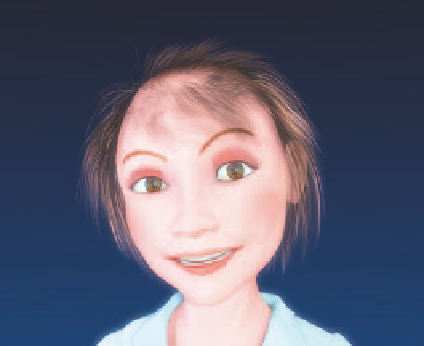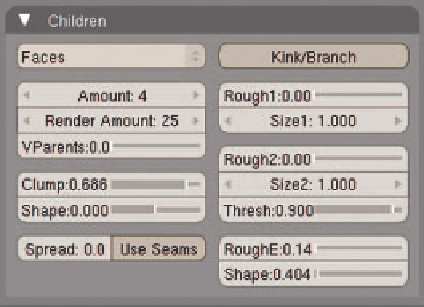Graphics Reference
In-Depth Information
also need to keep track of your
Density
vertex group, so that your added strands will correspond to it. Of course,
you could always alter the vertex group afterward, or even wait until the parent strands are added to create it.
Filling it Out with Children
Rendering with only parent strands will produce disappointing, somewhat scary results. Figure 14.68 shows
the mother rendered with only parents. Ahem. She might want to wear a hat.
Figure 14.68
What happened to my hair?
Figure 14.68A
Reference image with children enabled
Children
are enabled on the
Children
panel of the
Particle buttons
. There are two modes of child gen-
eration. The fi rst,
Particles
, creates a certain number of children per parent and clusters the created children
around each parent strand. In my tests, this was only useful in very limited cases and produced overly clumpy,
poor results. The other option for children generation is
Faces
, in which children are created from the faces
of the mesh, using the parent strands only as guides, not for placement.
How many children to use? Start small and work your
way up. The fi nal number of strands will be equal to
the number of parents times the number of children, so
keep in mind that actual rendered strands can quickly
go through the roof. In
The Beast
, the mother's hair was
created with 1,715 parent strands and 25 children each,
for a total of 42,875 strands. The body fur of the mean
dog (not the curly fur) required 2,502 parents with 30
children each: 75,060 fi nal strands. You can see the
mother's Child strand setup in Figure 14.69.
Notice that the
Amount
is set to
4
, while the
Render
Amount
is set to
25
. The lower value is what will be
Figure 14.69
The mother's children




Search WWH ::

Custom Search